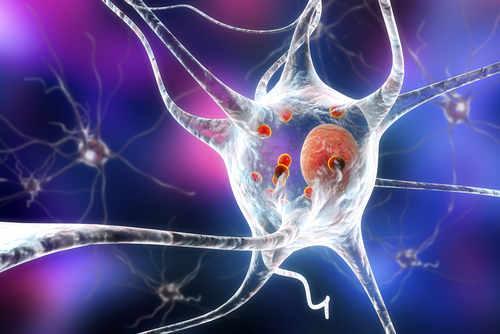Single Injection of RNA Therapy Blocks Degeneration, Prevents Disease Progression in Mice Models of Familial ALS

A single spinal injection of an investigational RNA therapy blocked motor neuron degeneration and saved motor function in animal models of familial amyotrophic lateral sclerosis (ALS) linked to SOD1 mutations, a study reports.
Giving the treatment — a virus-delivered gene-silencer targeting the SOD1 gene — before the onset of symptoms resulted in near-complete preservation of spinal neurons and muscle innervation, while it “potently” blocked disease progression in mice already showing ALS-like symptoms.
The findings, detailed in the study, “Spinal subpial delivery of AAV9 enables widespread gene silencing and blocks motoneuron degeneration in ALS,” were published in the journal Nature Medicine.
ALS is a neurodegenerative disease that damages motor neurons in the brain and spinal cord that are responsible for communicating movement. This causes debilitating loss of motor control, including the ability to speak, eat, move, and breathe.
While sporadic ALS, the most common form of the disease, can virtually affect anyone and its cause is not well understood, familial ALS, which accounts for up to 10 percent of the cases, is inherited from a parent.
Mutations in SOD1 gene are one of the most frequent causes of familial ALS. SOD1 provides instructions for making an enzyme called superoxide dismutase, which neutralizes superoxide radicals — toxic oxygen molecules released as a byproduct of the cell’s natural metabolism.
Research suggests that SOD1 mutations cause an increase in harmful oxygen radicals, or results in the accumulation of misfolded enzyme, which kill motor neurons.
Now, researchers at the University of California San Diego School of Medicine developed a new strategy to treat SOD1-related familial ALS.
The approach involves injecting a short hairpin RNA (shRNA) — a short, lab-made RNA molecule – capable of silencing, or turning off, the SOD1 gene, delivered to cells by an adeno-associated virus (AAV).
RNA is a molecular cousin of DNA that stores genetic information and has the ability to change the activity of genes.
AAVs have been investigated extensively as delivery vectors for DNA or RNA-based therapies. They are virus-like particles that retain their capacity to enclose and deliver genetic material to cells, but are modified to be harmless.
In the new study, single injections of the shRNA-carrying virus were given at the cervical (neck area) and lumbar (lower spine) regions of the spinal cord in mice models of SOD1-linked ALS, either just before or after they had begun experiencing disease symptoms.
Mice used for the study carried a SOD1 mutation that resulted in the accumulation of misfolded SOD1 enzyme.
For that, researchers also developed a new spine delivery technique — called a subpial injection — that administers the treatment below the pia matter, which is the delicate innermost membrane that covers the brain and spinal cord.
A single subpial injection before the onset of symptoms in mice markedly blocked spinal motor neuron death and inflammation and lead to nearly full preservation of spinal motor neurons and the junctions between neurons and muscle fibers. Mice kept a normal neurological function and remained free from any detectable disease.
Notably, treatment of mice already displaying ALS-like symptoms “potently” stopped further disease progression and motor neuron degeneration, saving motor function, researchers reported.
In both approaches, the positive effects over disease were matched by the silencing of mutated SOD1 in the spinal cord and brain. Treated mice lived without negative side effects and had a normal lifespan.
“At present, this therapeutic approach provides the most potent therapy ever demonstrated in mouse models of mutated SOD1 gene-linked ALS,” the study’s senior author, Martin Marsala, MD, professor at UC San Diego School of Medicine, said in a university press release.
Researchers also developed the prototype of an injection device for giving subpial injections to humans. They tested the safety and effectiveness of this device in adult pigs, whose dimensions of the spinal cord are similar to humans. The technique could be performed reliably and without surgical complications.
“[E]ffective spinal cord delivery of AAV9 vector in adult animals suggests that the use of this new delivery method will likely be effective in treatment of other hereditary forms of ALS or other spinal neurodegenerative disorders that require spinal parenchymal delivery of therapeutic gene(s) or mutated-gene silencing machinery, such as in C9orf72 gene mutation-linked ALS or in some forms of lysosomal storage disease,” Marsala said.
Next steps, Marsala said, involve performing additional studies to access the treatment’s safety in large animal models and to determine the optimal therapy dosage.
“While no detectable side effects related to treatment were seen in mice more than one year after treatment, the definition of safety in large animal species more similar to humans is a critical step in advancing this treatment approach toward clinical testing,” Marsala said.






